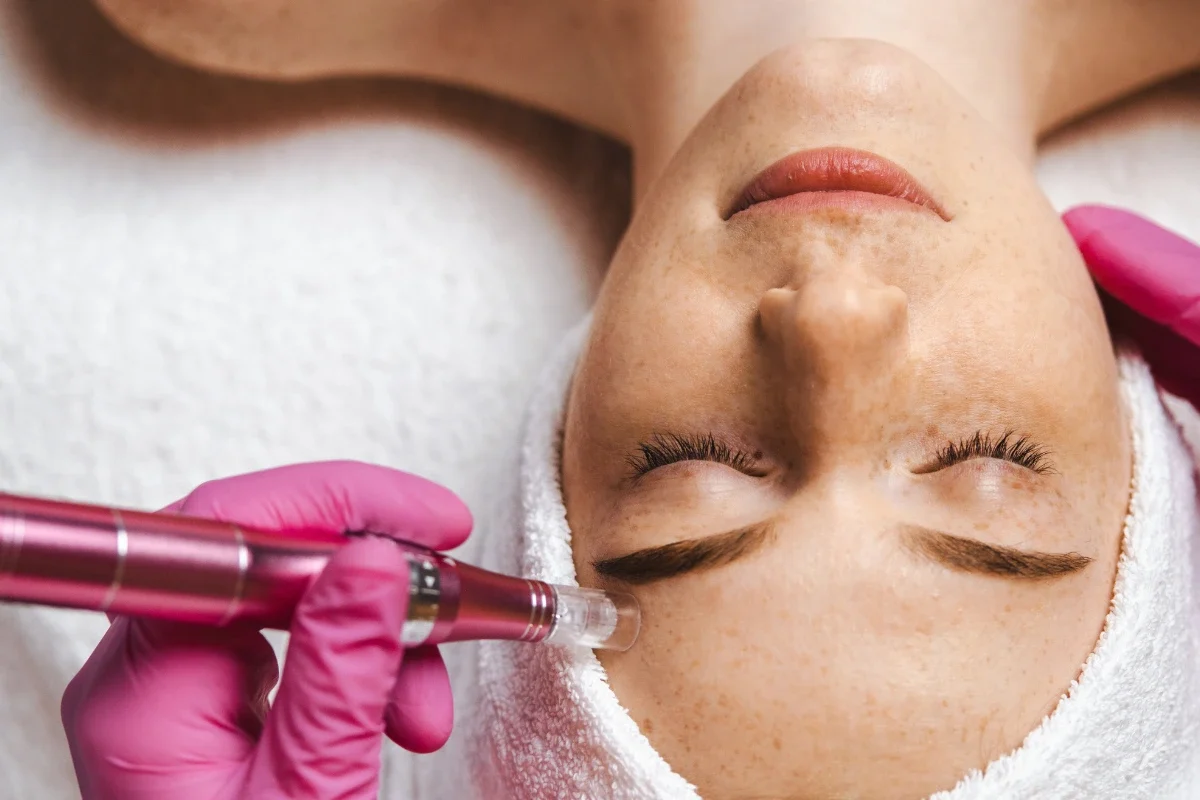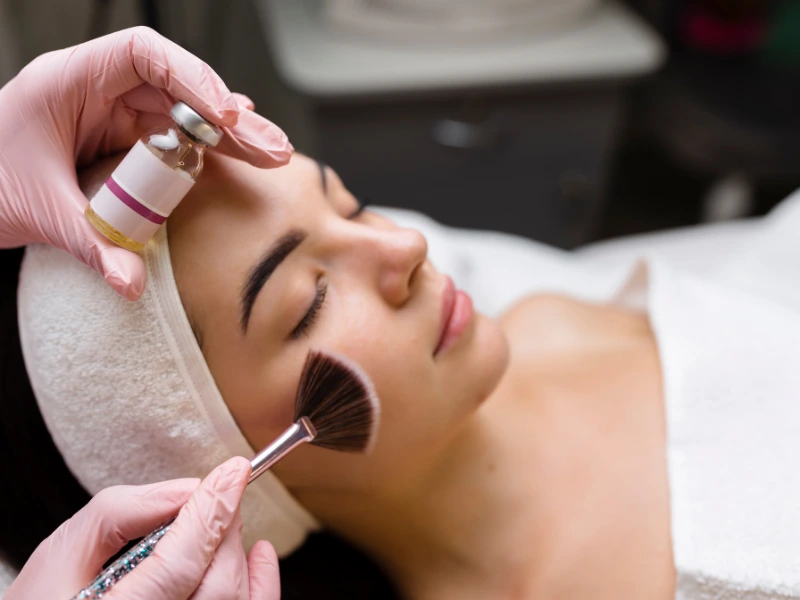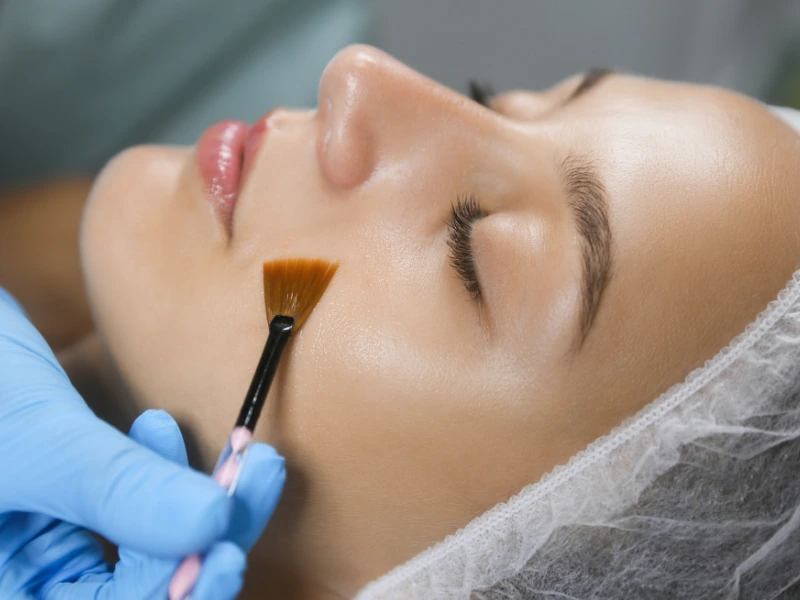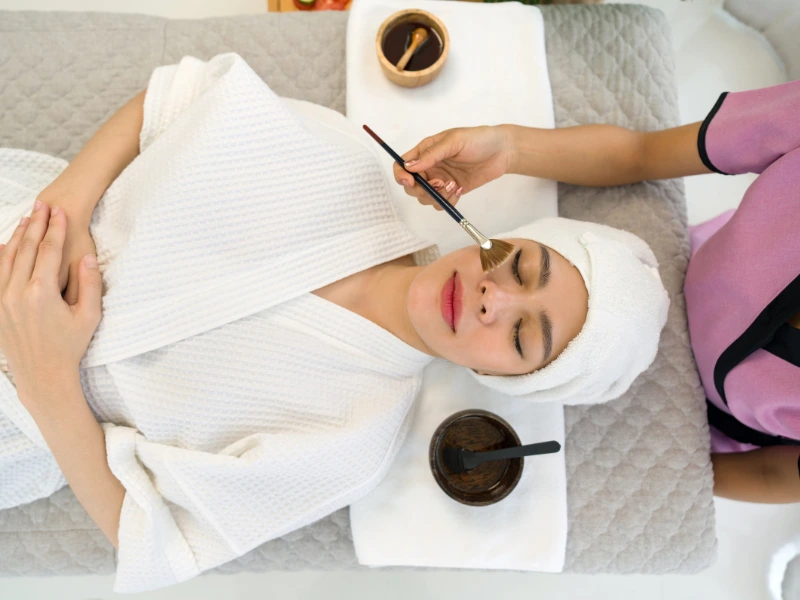

Proper aftercare ensures glowing, healthy skin post-VI Peel. Hydrate, avoid sun exposure, and follow expert guidelines. Book your next session today!
A chemical peel is a popular treatment for fine lines, acne, and hyperpigmentation. It removes damaged skin layers to reveal a brighter, smoother complexion. The VI Peel solution is an advanced option that targets multiple skin concerns with minimal discomfort.
Choosing the right peel depends on your skin’s needs, treatment depth, and downtime tolerance. Some peels offer mild exfoliation, while others reach deeper layers for stronger results. Understanding VI Peel vs Chemical Peel helps you find the best option for your skincare goals.
The VI Peel and traditional chemical peels work differently based on depth, ingredients, and skin concerns. Choosing the right one depends on your skincare needs.
The VI Peel is a medium-depth peel, treating both the epidermis and upper dermis. Superficial peels only target the top layer and offer milder results.
The VI Peel solution combines Vitamin C, salicylic acid, and TCA for enhanced effectiveness. Traditional chemical peel solutions often use a single acid, limiting their benefits.
The VI Peel is safe for all skin tones, including darker skin tones. It effectively treats acne, fine lines, and hyperpigmentation without increasing pigment risks. Some chemical peels may not be suitable for sensitive or darker skin.
The VI Peel contains a built-in numbing agent, reducing pain and irritation. Many traditional peels can cause burning or stinging sensations, requiring longer recovery times.
The VI Peel offers a gentler, more versatile option for smoother, clearer skin with minimal discomfort and downtime.
A chemical peel is a skincare treatment that removes damaged outer layers to reveal smoother, healthier skin. It works by applying a chemical solution that gently exfoliates the surface, improving texture and tone.
There are three main types of chemical peels, each designed to target different skin concerns. Superficial peels use mild acids like glycolic acid to treat dullness, acne, and fine lines by exfoliating the outer skin layer. Medium-depth peels penetrate deeper using trichloroacetic acid (TCA) or salicylic acid, making them effective for pigmentation, acne scars, and wrinkles. Deep peels use stronger solutions to remove severe sun damage and deep wrinkles, offering long-lasting results but requiring more downtime.
The chemical peel solution promotes cell turnover, helping to improve acne, hyperpigmentation, and fine lines. Each peel works differently based on individual skin needs, making it a customizable treatment for achieving brighter, clearer skin.
The VI Peel is a medical-grade chemical peel that improves skin texture, tone, and clarity. It removes damaged skin layers to reveal a smoother, brighter complexion. Unlike traditional peels, it combines multiple powerful ingredients for better results with less irritation.

The VI Advanced Peel contains Vitamin C, salicylic acid, and trichloroacetic acid (TCA). These ingredients target acne, fine lines, and pigmentation while boosting collagen production. This helps improve skin elasticity and promotes a more youthful look.
The VI Peel solution works for all skin types, including darker skin tones. It reduces the risk of hyperpigmentation, making it a safer choice for sensitive skin. Unlike stronger peels, it includes a built-in numbing agent to minimize discomfort during application.

Both VI Peel and chemical peels help improve skin texture, fine lines, acne, and hyperpigmentation. However, they offer different benefits based on ingredients, depth, and downtime.
Both treatments offer unique advantages. The best choice depends on your skin concerns, downtime preferences, and desired results.
The cost of a VI Peel and chemical peels varies based on treatment type, depth, and location. A VI Peel is generally more expensive than superficial chemical peels but more affordable than deeper treatments. On average, a VI Peel costs between $250 and $500, while chemical peels range from $100 to $1,000, depending on their depth and formulation.

Several factors affect the cost, including the providers expertise, treatment area, and the number of sessions needed. Deeper chemical peels cost more due to their stronger ingredients and longer recovery time. Although the VI Peel solution requires multiple sessions for the best results, it offers great long-term value by improving various skin concerns with minimal downtime.
Investing in the right peel helps achieve smoother, healthier skin while reducing the need for frequent treatments. Consulting a professional can determine the best option based on your skin’s needs and budget.
VI Peel results appear within a week, with peeling usually starting around day 3 to 4. By day 7, skin looks brighter, smoother, and more even-toned.
Results from chemical peels vary depending on their depth. Superficial peels show improvements within a few days, while medium-depth peels take one to two weeks to reveal full results. The VI Peel solution effectively removes damaged skin layers, promoting fresh, glowing skin with minimal discomfort. Chemical peels work well for fine lines, acne scars, and hyperpigmentation, but deeper treatments may require longer recovery periods.
The longevity of results depends on the peel type. VI Peel effects typically last 4-6 weeks, while deeper chemical peels provide longer-lasting improvements. Choosing the right peel ensures healthy, youthful skin while addressing specific skin concerns effectively.
The VI Peel solution has minimal downtime, making it a convenient option. Peeling usually starts on day 3 and lasts up to 7 days. Most people experience mild flaking, dryness, and slight redness.
Traditional chemical peels may require longer recovery periods, depending on their depth. Superficial peels heal quickly, while medium-depth peels take one to two weeks. Deep peels need several weeks for full recovery.
Common side effects of chemical peels include redness, flaking, and sensitivity. The skin may feel tight and dry for a few days. Proper aftercare is essential to protect healing skin and prevent irritation.

To maximize results, avoid direct sun exposure and apply sunscreen daily. Keep the skin moisturized and follow post-peel care instructions. Avoid scrubbing, picking, or using harsh skincare products until the skin fully recovers.
The VI Peel is usually more expensive than superficial peels but more affordable than deep peels. Costs depend on treatment depth and location.
No, a VI Peel is a medical-grade peel that combines multiple active ingredients. Traditional chemical peels often use single acids for exfoliation.
The VI Peel offers faster recovery and is safe for all skin types. Traditional chemical peels come in various strengths to target specific concerns.
Combining both treatments is not recommended at the same time. However, alternating them under professional guidance may enhance skin benefits.
Most people wait at least four to six weeks between treatments. This allows the skin to fully heal before another peel.

Both VI Peel and chemical peels improve skin texture, acne scars, and fine lines. The best choice depends on your skin type and treatment goals.
The VI Peel solution provides quick recovery with minimal irritation. Traditional chemical peels offer customized options for deeper skin concerns. Each treatment has unique benefits based on your skin’s needs.
At Balance Medspa, we help you choose the best peel for your skin type. Book a consultation today to get a personalized treatment plan for glowing, healthy skin.

Not available!